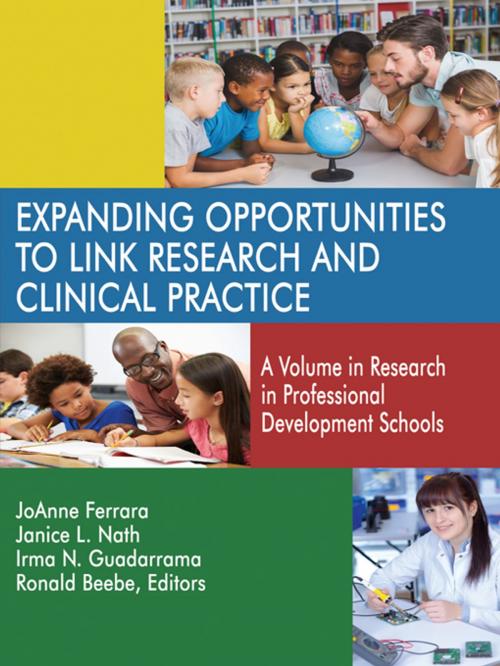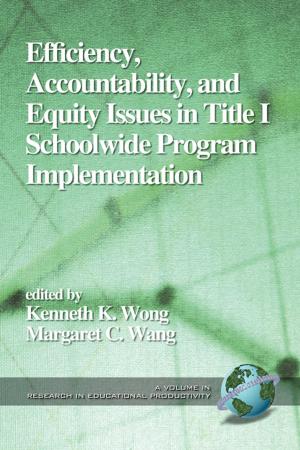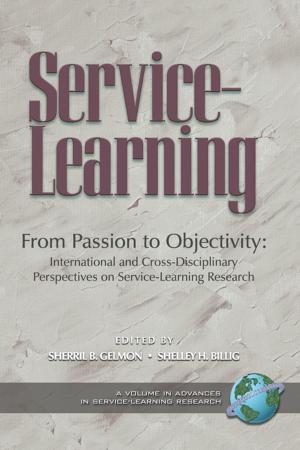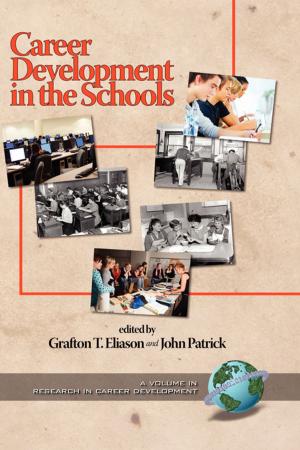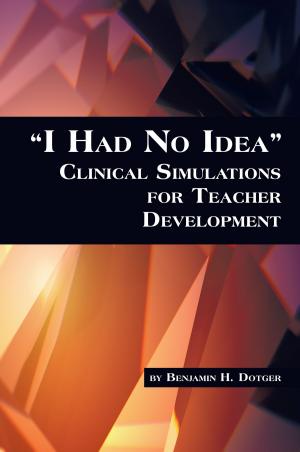Expanding Opportunities to Link Research and Clinical Practice
A Volume in Research in Professional Development Schools
Nonfiction, Reference & Language, Education & Teaching| Author: | ISBN: | 9781681238050 | |
| Publisher: | Information Age Publishing | Publication: | March 1, 2017 |
| Imprint: | Information Age Publishing | Language: | English |
| Author: | |
| ISBN: | 9781681238050 |
| Publisher: | Information Age Publishing |
| Publication: | March 1, 2017 |
| Imprint: | Information Age Publishing |
| Language: | English |
This volume in the Research in Professional Development Schools book series considers the role professional development schools (PDSs) play in expanding opportunities for linking research and clinical practice. As in past volumes of this series, PDS practitioners and researchers make a compelling case for the power of micro?level initiatives to change practice. Contributors share ideas to expand PDS work beyond site?specific contexts to include a broader macro?level agenda for clinical practice. Authors hope to inspire large scale PDS reform through replication of successful initiatives featured in this volume. Evoking change is not easy. Nonetheless, series editors and contributors conclude that PDSs generate a critical mass of PK16 educators willing to form partnerships to address enduring educational dilemmas. This volume represents a cross section of PDS stakeholders engaged in research along with innovative projects that uncover the richness of clinical practice. Higher education faculty, school practitioners, and preservice teachers featured in these chapters explore the ways PDSs deepen clinical practice while enriching teaching and learning. We begin with the discussion by Beebe, Stunkard, and Nath on the National Association for Professional Development School’s (NAPDS’s) role to support teacher candidates’ clinical practice through the cooperative efforts of university and school?based personnel. The authors explain NAPDS’ history and advocacy over the years to promote a context for schooluniversity partnerships to thrive and expand. As the premier association guiding the work of collaborative P12/higher education partnerships, we welcome the insightful perspectives provided.
This volume in the Research in Professional Development Schools book series considers the role professional development schools (PDSs) play in expanding opportunities for linking research and clinical practice. As in past volumes of this series, PDS practitioners and researchers make a compelling case for the power of micro?level initiatives to change practice. Contributors share ideas to expand PDS work beyond site?specific contexts to include a broader macro?level agenda for clinical practice. Authors hope to inspire large scale PDS reform through replication of successful initiatives featured in this volume. Evoking change is not easy. Nonetheless, series editors and contributors conclude that PDSs generate a critical mass of PK16 educators willing to form partnerships to address enduring educational dilemmas. This volume represents a cross section of PDS stakeholders engaged in research along with innovative projects that uncover the richness of clinical practice. Higher education faculty, school practitioners, and preservice teachers featured in these chapters explore the ways PDSs deepen clinical practice while enriching teaching and learning. We begin with the discussion by Beebe, Stunkard, and Nath on the National Association for Professional Development School’s (NAPDS’s) role to support teacher candidates’ clinical practice through the cooperative efforts of university and school?based personnel. The authors explain NAPDS’ history and advocacy over the years to promote a context for schooluniversity partnerships to thrive and expand. As the premier association guiding the work of collaborative P12/higher education partnerships, we welcome the insightful perspectives provided.
